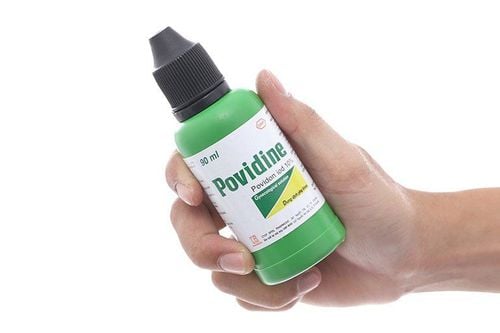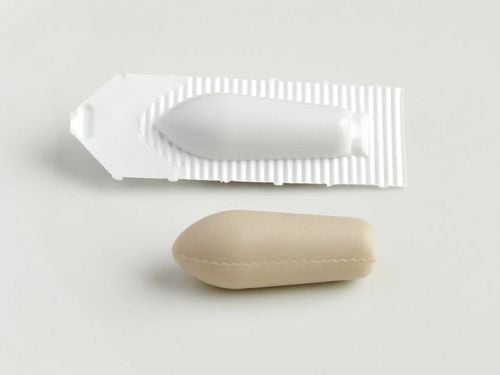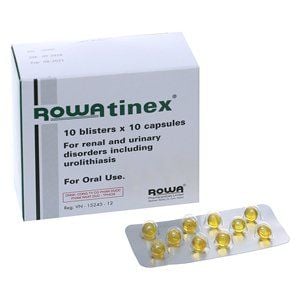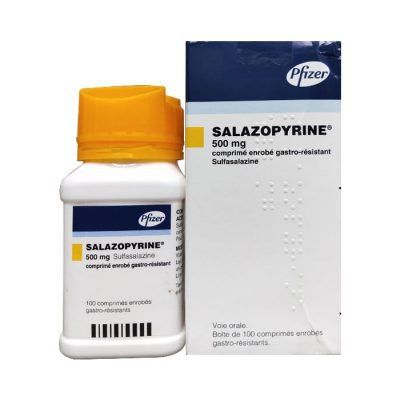The medication Mesalazine contains 5-aminosalicylic acid (5-ASA) with a dosage of 500mg. It belongs to the group of drugs indicated for the treatment of ulcerative colitis, especially cases of sigmoid colitis and proctitis.)
1. What active ingredient is in Mesalazine 500 mg?
Mesalazine 500 mg contains 5-aminosalicylic acid (5-ASA), which is effective in treating inflammation in the digestive tract. The exact mechanism of action of Mesalazine has not been clearly demonstrated, but it is considered to act locally in the treatment process rather than systemically.
2. Indications and Contraindications of Mesalazine 500 mg
2.1. Indications for Mesalazine 500 mg
Mesalazine is indicated for use in the following cases: treatment of mild to moderate ulcerative colitis, treatment of sigmoid colitis, and proctitis.
2.2. Contraindications for Mesalazine 500 mg
Mesalazine should not be used in the following situations:
- Patients with a history of hypersensitivity to salicylic acid or sulfasalazine components of the medication,
- Patients with severe renal impairment,
- Patients with liver dysfunction,
- Patients with pyloric stenosis or bowel obstruction.
- Mesalazine is contraindicated in children under 2 years of age.
3. Dosage and Administration of Mesalazine
Mesalazine is formulated as enteric-coated tablets and should be taken orally. Patients should swallow the whole tablet without chewing or crushing it before swallowing.
Adult dosage
- For acute treatment: The usual dose for adults is 4 grams per day (equivalent to 8 tablets of 500 mg), divided into 2 or 3 doses.
- For maintenance therapy: The starting dose is 1.5 grams per day (equivalent to 3 tablets of 500 mg), divided into 2 or 3 doses per day.
Pediatric dosage
For ulcerative colitis treatment:
- Children aged 5 to 15 years: The maximum dose is 1 gram (equivalent to 15–20 mg/kg), taken 3 times a day.
- Children aged 15 to 18 years: The dose is between 1 and 2 grams (equivalent to 2–4 Mesalazine tablets), taken twice a day or the total daily dose can be divided into 3 doses.
For maintenance of ulcerative colitis and Crohn's disease:
- Children aged 5 to 15 years: 10 mg/kg per dose, with a maximum dose of 500 mg, divided into two doses per day.
- Children aged 15 to 18 years: 2 grams per dose, taken once a day.
Mesalazine is not suitable for children aged 2 to under 5 years. It is recommended to consult a doctor before use.
There is no recommended pharmacokinetic dosage for patients over 65 years old, so elderly patients should use Mesalazine with caution.
The dosage provided is for reference purposes. Patients should consult a doctor for detailed information and specific dosage recommendations.
4. Management of Overdose and
Missed Dose
If a dose is missed, take the missed dose as soon as remembered. However, if the missed dose is close to the next dose, skip the missed dose and take the next dose as scheduled. Do not take a double dose to make up for a missed dose, as this could lead to unwanted side effects.
5. Common and Rare Side Effects of Mesalazine
- Common side effects include general fatigue, headache, weakness, dizziness, fever, gastrointestinal disturbances, diarrhea, nausea, abdominal pain, and may worsen symptoms of colitis, constipation, indigestion. Some patients may experience urticaria, rashes, itching, acne, or sore throat.
- Rare side effects include myocarditis, pericarditis, photosensitivity, hepatitis, increased transaminase levels, joint pain, muscle cramps, back pain, or neurological disorders such as nephritis and nephrotic syndrome.
If any side effects occur, patients should stop using the medication and inform their doctor immediately for appropriate management.
6. Precautions When Using Mesalazine
- Mesalazine should be used cautiously in patients with impaired liver or kidney function. It is not recommended for patients with severe renal impairment. Kidney function should be monitored regularly during treatment, particularly serum creatinine levels during the initial phase.
- Mesalazine should be used with caution in patients with unexplained bleeding, bruising, or purpura, anemia, fever, or other hematologic abnormalities.
- In patients with myocarditis or pericarditis, the drug's components should be used with caution. If any adverse effects are suspected, treatment should be stopped immediately.
Mesalazine, which contains sulfasalazine, may increase the risk of kidney toxicity, so caution should be exercised when using it alongside other medications during treatment.
For further health, nutrition, and beauty information, visit the website of Vinmec International General Hospital to protect your health and that of your loved ones.
To arrange an appointment, please call HOTLINE or make your reservation directly HERE. You may also download the MyVinmec app to schedule appointments faster and manage your reservations more conveniently.








